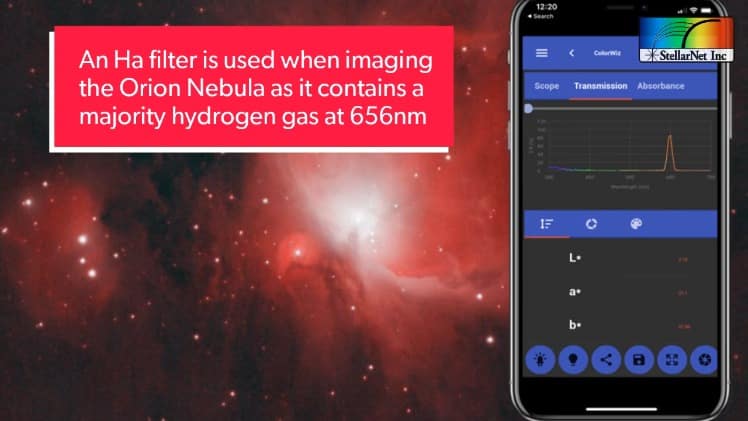After analyzing the spectrum of Sirius and Betelgeuse, the SpectraWizard decided to take a shot with astrophotography. His journey takes him to the Great Orion Nebula where he creates a superimposed image of the nebula using bandpass filters. He uses spectroscopy to analyze the filter bandpass to make sure light specific to the emitted elements are collected.
Astrophotography filters are used to capture crisp images of celestial bodies and deep sky objects. The filters reject and allow specific wavelengths of light to allow long exposures without interference. There are many types of astrophotography filters available, most of which, are typically installed directly above the camera sensor.
Using a BLUE-Wave visible spectrometer, SL1-filter light source, TXF-4 transmission fixture, and 2 F600-VISNIR fiber optic cables the SpectraWizard measured the optical transmission of filters used in astrophotography. Because the SpectraWizard likes to try all the cool new products StellarNet has to offer, he upgrades with zAP2 WiFi and uses the ColorWiz App on his iPhone to get all the spectral data.
The Orion Nebula is one of the brightest nebulae in the night sky, and is visible to the naked eye. This interstellar cloud of ionized atomic hydrogen is 24 light years across and has a young open cluster of four primary stars known as Trapezium. Using an Ha Filter at 656nm we can see the bright emission from the hydrogen gas. Similarly, city light filters and OIII narrowband filters we can isolate two doubly ionized oxygen lines (496 and 501nm). Superimposing these images the SpectraWizard was able to capture his first images of the Orion Nebula.
Great astrophotography requires a lot of practice, patience, and expertise. Not to mention it requires increasingly sophisticated and expensive instrumentation. The SpectraWizard may decide to stick to spectroscopy after this adventure!










